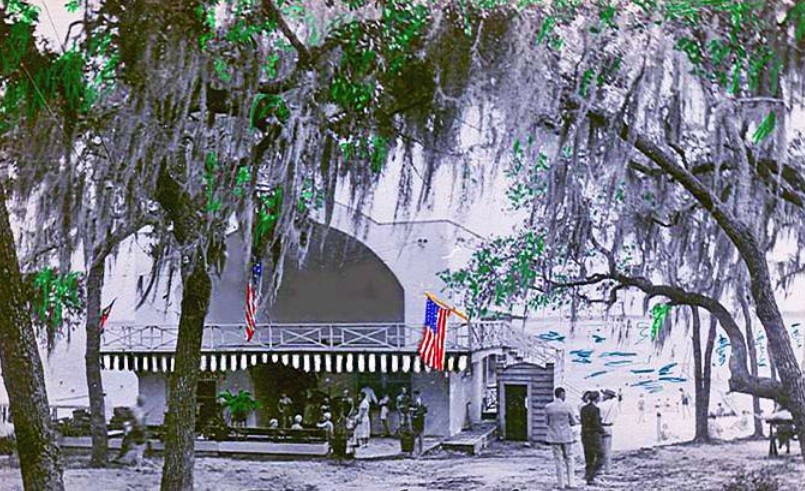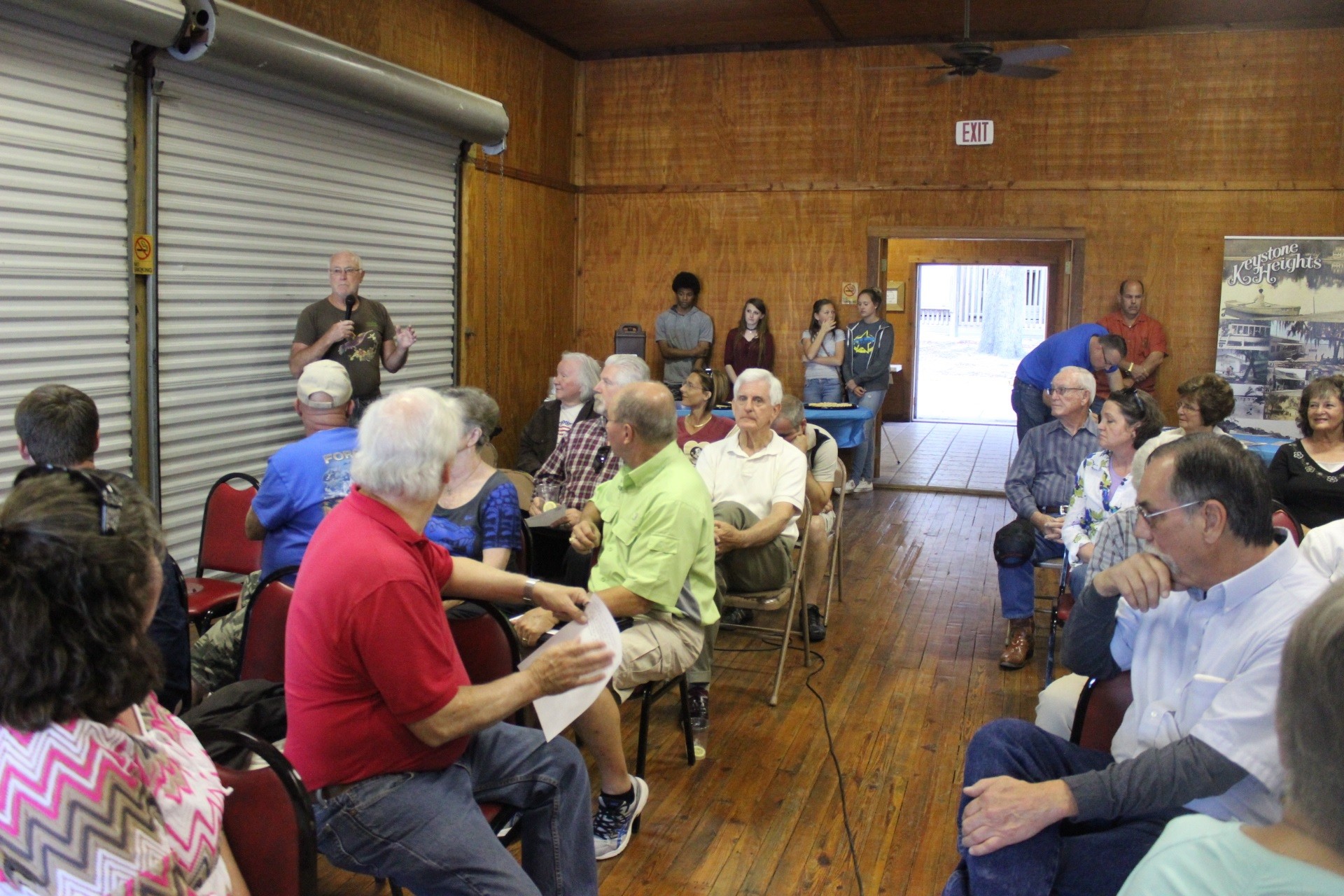Pavilion restoration study in works
KEYSTONE HEIGHTS – City officials have taken steps to apply for a $5,000 state grant that would be matched with city funds to study the feasibility of restoring the Keystone Beach Pavilion.
The …
This item is available in full to subscribers.
Attention subscribers
To continue reading, you will need to either log in to your subscriber account, or purchase a new subscription.
If you are a current print subscriber, you can set up a free website account and connect your subscription to it by clicking here.
If you are a digital subscriber with an active, online-only subscription then you already have an account here. Just reset your password if you've not yet logged in to your account on this new site.
Otherwise, click here to view your options for subscribing.
Please log in to continueDon't have an ID?Print subscribersIf you're a print subscriber, but do not yet have an online account, click here to create one. Non-subscribersClick here to see your options for subscribing. Single day passYou also have the option of purchasing 24 hours of access, for $1.00. Click here to purchase a single day pass. |
Pavilion restoration study in works
KEYSTONE HEIGHTS – City officials have taken steps to apply for a $5,000 state grant that would be matched with city funds to study the feasibility of restoring the Keystone Beach Pavilion.
The city’s Community Redevelopment Agency – which is comprised of the city council members – voted 4-0 (with council member Dan Lewandowski absent) on April 17 to have the city’s Heritage Commission to apply for a grant from the Florida Department of State Division of Historical Resources. The feasibility study and accompanying grant application is an outgrowth of public feedback given at the April 6 pavilion visioning session.
“This is a very special place and it can draw tourists and not only will we benefit from better facilities for the community, but the surrounding areas,” said LaDonna Hart, co-founder and chair of the Heritage Commission, speaking this Monday referring to the April 6 community session.
Hart said a restored pavilion could be used for class and family reunions, a youth center and a community center where the mayor could use to hold for special awards ceremonies and many more.
“It’s just a focal point to bring the community together,” Hart said.
When he was a teenager, Mayor Tony Brown spent entire summers at the city’s pavilion playing ping-pong, billiards, listening to concerts and, when it got hot, jumping straight from the dock into the water.
Things are different now. The lake levels in Lake Geneva, which makes up the shore of Keystone Beach, today extends far beyond the pavilion.
“I don’t think the younger generation, the teenagers of today understand what this used to be,” Brown said. “My generation and up and some of the younger ones that are in their 40s – we remember the water, we remember all the activities we had here.”
While the lake levels have changed, the pavilion has also changed over the years.
City officials and residents are currently pushing to undergo a major restoration to the pavilion. Residents want to restore the pavilion to the way it looked and functioned in 1921, complete with its original bandshell.
Residents shared memories and suggestions at an April 6 visioning session held within the pavilion itself. Some residents stood in the back because of the packed house while members of the Keystone Heights Heritage Commission unveiled early conceptual plans for the pavilion restoration.
Architect and Heritage Commission member Don Morgan revealed his vision for a pavilion that would draw others from outside the community. The new pavilion would feature air conditioning, a small kitchen and restrooms while removing old changing rooms that largely have remained unused.
“It will be quite a long time before we make any formal presentation to the state,” Morgan said. “So we’ve got quite a bit of planning time to work with.”
The pavilion represents the heart of the community with its central location and, more importantly, the memories the residents still carry of summer days in their childhood.
The city tapped Morgan, 85, for pro-bono design work for the project’s initial stages. The Heritage Commission will begin looking for potential grants to fund the pavilion restoration. Last fall, Keystone Heights was named the 71st Certified Local Government in Florida, a new status that gives it eligibility for grant money under the Florida Department of State. The city hopes to use state funding plus other grants and donations to save the landmark building.
Once the city has a better idea on what it plans to spend, the restoration will go out for bid.
However, the city must remain realistic about its expectations. There is no current projection on what the landmark project could even remotely cost the city.
“We have no idea what we’re looking at in terms of overall cost for the project,” said City Manager Scott Kornegay. “We know it’s going to be sizable. It’s going to be a big project. This is a historical structure, and anything we can do to bring it back to its original use and function and bring it back to where it used to be and start having more events and gatherings down here would be super.”
The town hopes to have the remodel completed before the city marks its centennial anniversary in 2025.
During the visioning meeting, residents punctuated the opportunity the city has to restore such a historical structure.
“The signature of this place in a way was water,” said resident Richard Bloodgood. “People came from all over...it wasn’t just the water, the water was great, but it was the atmosphere. The pavilion, the lights, the ping-pong table, the billiard table and all that other stuff. We have a golden opportunity here...I feel so good about this, just looking out there and seeing all that beautiful water and landscape.”
The redesign would also reattach the pavilion’s bandshell, which was removed in the 1980s. At that time, the bandshell was essentially a semi-circular metal dome. Morgan hopes to replace it with the less costly yet durable fiberglass.
The bandshell became an essential centerpiece to city concerts. Now, however, with amplification devices so common in music, the bandshell wouldn’t become so much a necessity, but draw others to the community.
The restoration is as much for the community as it for others outside the community. As the levels of Lake Geneva disappeared, so did much of Keystone Heights’ tourism. A redesigned pavilion would help guide new tourism, but a restored shoreline would drive it.
A new bill seeks to allocate money to do just that. Senate Bill 234, introduced by Fleming Island Republican Rob Bradley, would pipe water from Black Creek near State Road 16 and Penney Farms to Lake Magnolia on Camp Blanding property.
The project calls for the construction of a pipeline that would have a 10-million-gallon transmission capacity. Current estimates put a $41 million price tag on the project with completion slated for June 2023. It would be paid for using funds from Amendment 1, which was approved by Florida voters in 2014.
Senate Bill 234 sailed through the senate without question, while its house companion, House Bill 847, is currently dead in the water without so much as a hearing scheduled yet.
Reconstruction for the pavilion would follow the same timeline as the proposed water project.
The city council restored the pavilion’s facade and interior in the 90s, but the new proposal would be a more dramatic restoration.
The restoration comes at a time when Keystone Heights is trying to plan for the future.
“It’s like everything, it takes time,” Brown said. “We’re pushing forward to do what we can for the lakes and keep a positive attitude.”











